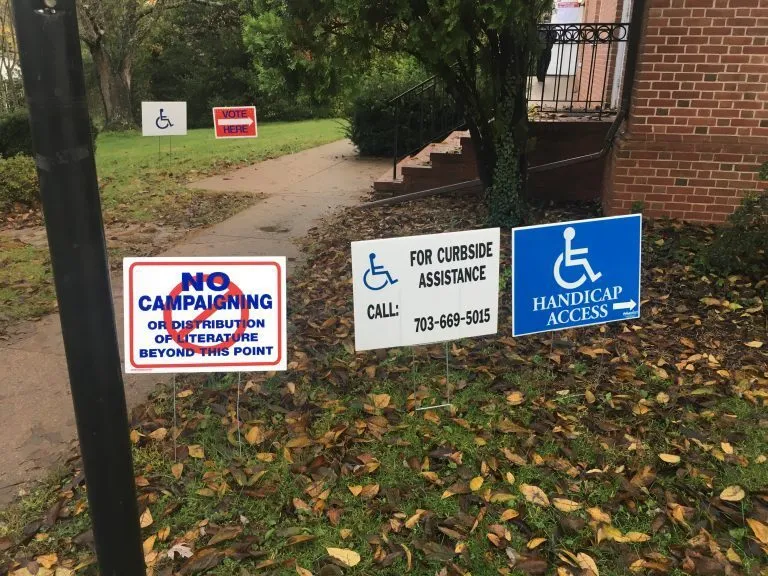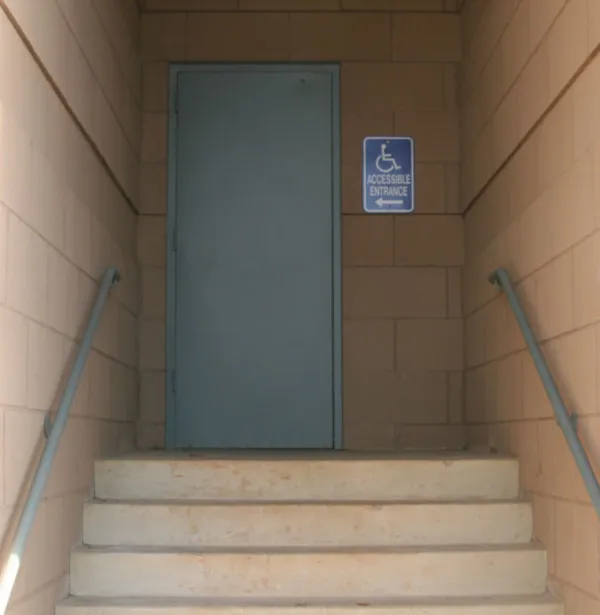Get people in the door.
- Summary: Place signs to direct people with disabilities to the accessible entrances.
- Who it helps: People who use wheelchairs and walkers, who struggle with stairs and opening doors.
- Additional benefits: People with strollers, carts, or who are carrying children and/or boxes.
To get the most people inside your facilities, you’re going to need at least one accessible entrance. To accommodate people with disabilities, accessible entrances:
- Are at least 32 inches wide,
- Can be reached and entered without stairs or going over uneven terrain,
- Can be opened and closed easily, and
- Have enough room around the entrance to navigate a wheelchair.
Once you have an accessible entrance, you need to make sure people with disabilities can find it quickly and easily. Place signs near inaccessible entrances that point to the nearest accessible entrance.

Signs should have the international symbol of accessibility and an arrow pointing to the nearest accessible entrance.
What can I do?
Check and make sure that you have a sign next to every inaccessible entrance that clearly indicates the closest route to an accessible entrance. When the entrance is hidden from view, place signs near the approach to help. Make sure the signs are placed to clearly indicate where to go.
